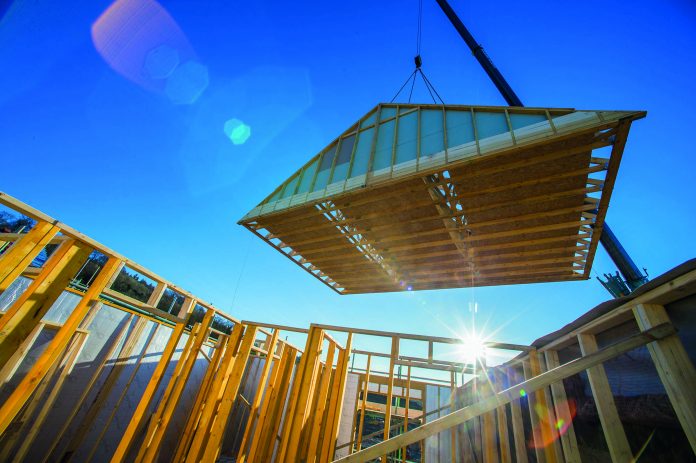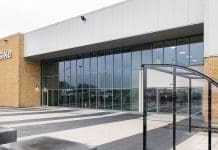Marcus Saunders, client service executive for construction at leading insurance broker and risk management expert Gallagher, tells us what the new research from the Structural Timber Association (STA) into fire safety could mean for insuring timber framed properties during construction
As an insurance broker working in construction for more than 30 years, I listened to the launch of the latest STA research into fire safety with interest. I have personally been involved with the STA for more than 10 years, but have kept an even closer eye than usual on recent developments in the sector for a number of reasons. Firstly, because of how the increased use of timber can help the construction industry meet the ambitious carbon targets set by the government, but also because the sector has made huge progress in recent years, which I believe should start to positively impact insurers views as pricing of these risks.
For a long time, insurers have been nervous about timber frame developments due to the perceived increased fire and water damage risks, and as a result the availability and cost of insuring this type of construction has always come at a higher cost.
However, the publication of this research will help reinforce the message that this view is increasingly out of date and insurers should review their pricing and views of these risks, as timer frames are in many cases aligned to other methods of construction, and in some ways even leading the way. Gallagher is working hard within the insurance industry to help convey the advances that have taken place over recent years.
The research, Structural Timber Buildings: Fire Safety in Use, is the latest in a long line of technical guidance documents providing best practice to those in the industry and is the product of almost 18 months and nearly £250,000 of work, researching, testing and analysing huge amounts of data on the behaviour of fires in occupied buildings.
Fire tests
The STA ran multiple full-scale fire tests to EN1365, each on different timber frame systems; comprising walls with insulation and plasterboard variability and even penetrations in the walls for sockets. The European standard being chosen as it is seen within the industry as the gold standard of fire testing, and more onerous than the BS Standards. Included in this testing regime the panels tested were also run with the systems under maximum load designed to replicate the conditions they would be under when part of a larger building.
The outcome has resulted in a robust comprehensive suite of evidence-based solutions for timber frame systems that will deliver high levels of resilience and quality of fire safety, all comfortably complying with EN Standards. These results will play an important role in convincing insurers that their views on the risks presented by timber frame construction should be reviewed.
This research has never been more relevant, as its publication has coincided with a noticeable sea change in the attitude towards timber frame amongst real estate owners and developers in the UK. There is clear recognition that the real estate and construction market, one of the largest producers of CO2 in the UK, has a major challenge ahead in order to reach carbon zero by 2050 – and building in timber, due to its embodied carbon, has to play a huge role in reaching that target.
Build quality
To help support this research, STA has also released guidelines on build quality. STA recognise that the correct application of fire stopping is critical to the building performance regardless of the materials used. Responding to this need, the STA has provided guidance around the compliance with regulations on the installation of cavity barriers for both internal and external wall systems, including differentiating between fire stopping and cavity barriers, as too often these terms are used interchangeably when they are not the same thing. This additional guidance gives construction businesses information about which system and barriers are best suited for which type of timber frame systems. This guidance provides information where additional resilience can be achieved by exceeding minimum regulatory requirements.
Both these documents are inherently intertwined with STA Assure – a quality assurance scheme involving independent audits of all STA members to ensure compliance with standards set by the STA on competency and quality.
Insurers
So what does this mean for insurers and the insurance industry? In my view, this provides convincing further evidence that the STA and its members are leading the way when it comes to fire protection, fire stopping, regulatory compliance and, frankly, all-round best practice risk management on a construction site.
As readers will know, it is unclear where Building Regulations may land following the government’s review; however, the STA and the timber industry are taking a proactive view, ensuring their buildings go above and beyond BS Standards, as well as continuing to raise the bar in terms of fire safety and compartmentalisation.
Gallagher is the approved broker to the Structural Timber Association, and we are constantly looking for new ways to educate insurers and to help assist in improving the image of the sector among the insurance market we hold roundtables and have organised timber frame manufacture factory tours. This research will go a long way to helping our cause.
The STA has invested in an industry-leading fire in use research project to test and prove commonly used timber frame wall, floor and roof make ups used in the UK marketplace.
The output of this research, a pattern book of EN tested systems, is believed to be the first of its kind in the UK timber frame sector. This research now forms part of the STA’s best practice guidance and is free to download from: www.structuraltimber.co.uk/links/research-documents
To find about more about the STA and locate members go to: www.structuraltimber.co.uk
Marcus Saunders MIBSC Cert CII
Client service executive
Gallagher
Structural Timber Association








![[Video] Enhancing safety with fire doors: A case study of Marina Care Home](https://www.pbctoday.co.uk/news/wp-content/uploads/2025/06/maxresdefault-218x150.jpg)





